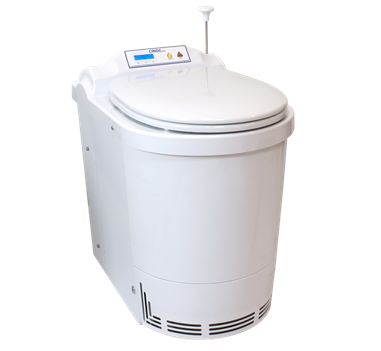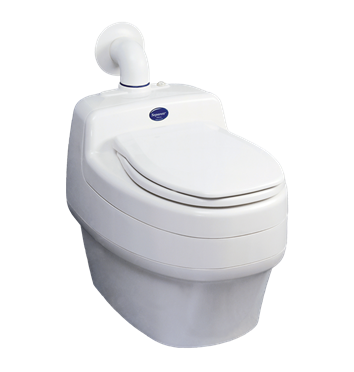Which toilet solution?
There is much to consider when choosing a toilet solution.
The local authority’s regulations
All local authorities have regulations relating to the treatment of latrines, urine and urine-mixed wastewater from toilets. The regulations can vary between authorities depending on local environmental conditions. Regulations concerning latrines are aimed at preventing diseases potentially being spread by bacteria outside the toilet or latrine compost. The regulations therefore contain requirements for the bottom to be sealed and for material not to be spread out until a year after the last filling has taken place. Urine may, as a rule, be spread over growing vegetation on one’s own site, but there are authorities that do not permit urine to be spread. Certain authorities require the site to be of a certain size for urine to be spread. Contact the environmental and health protection administration, or its equivalent, in the local authority where the toilet solution is to be used, so that you choose an alternative that is acceptable to the authority. Many authorities post their regulations on their websites. It is the authority's environmental board which determines what you can and cannot do. When the authority adopts a position regarding your application to install a new toilet solution, their points of departure are that the solution:
- shall manage to achieve the protection level applying to the location.
- shall be dimensioned for five all year residents, even if it relates to a second home.
- shall be supplemented by some form of treatment for your bath, dishes and laundry water (BDL water).
emember that many authorities have already withdrawn septic tank emptying and that several will soon be doing the same. Check to see what things are like in the local authority where you want to install the toilet solution.

Accessible space/ the site’s suitability for filtration
If there is a space beneath, or a few metres away, from the toilet room, the number of possible solutions increases. When a property is to be built or converted it is therefore important to adopt a position regarding which solution is to be used, at the earliest possible stage. The space beneath the floor can be used as a privy or for collecting the waste in a latrine barrel for a composting system outdoors. Check that the space is adequate for the solution you select. Where urine filtration is permitted, there are factors such as the ground’s suitability for filtration, distance to surface water, drinking water supplies and site limits are crucial. In order to be able to ascertain the ground’s suitability and distance to groundwater, it is often necessary for test pits to be dug.

Comfort, care and cost
Consider how much comfort you want to have. Perhaps you want it just like at home or maybe you’ll be satisfied with a simpler alternative? And how much work are you prepared to invest in maintenance? Can you imagine taking things on yourself and composting the latrine and spreading urine from a dry toilet solution or emptying the ash box from an incinerating toilet? Last, but by no means least: How much may the toilet solution cost? Investment and running costs vary greatly between the different alternatives. The higher your comfort standards and less time for maintenance, the more it will cost, both in terms of investment and running costs.
 Incinerating toilet CINDI family
Incinerating toilet CINDI family Urine diverting toilet Villa 9000 series
Urine diverting toilet Villa 9000 series
 Incinerating toilet CINDI Basic
Incinerating toilet CINDI Basic
 Global - English
Global - English
 Svenska
Svenska
 Suomi
Suomi
 US English - Waterless toilets
US English - Waterless toilets
